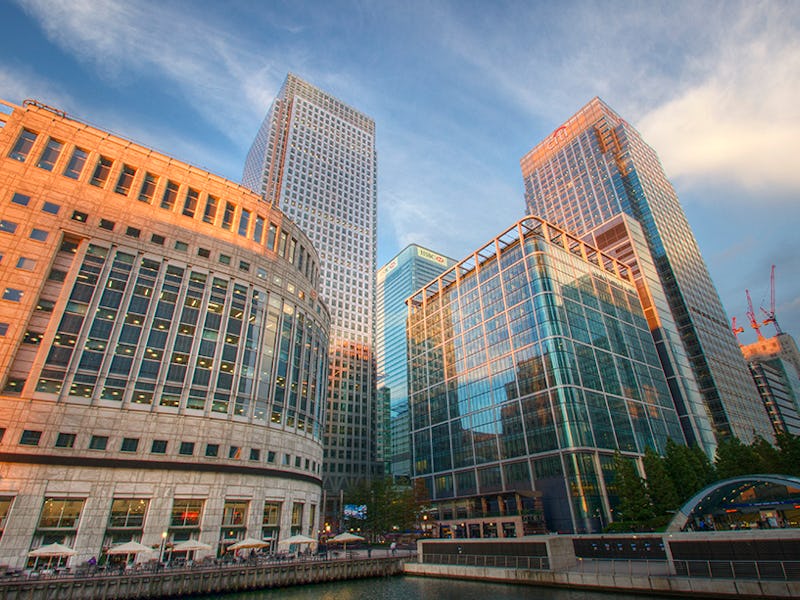Inexpensive New Material Cools Houses Without Using Any Energy
The University of Colorado Boulder has something up their sleeve.

Colorado just got even cooler. A team of engineers at the University of Colorado Boulder have designed a new roofing material that will keep structures cool, even under direct sunlight, with zero energy consumption. The chill new technology could have huge implications for harvesting the sun’s power even as it protects people from its scorching heat.
The manufactured metamaterial simultaneously reflects incoming solar radiation back into the atmosphere and uses infrared technology to shed its own heat. This natural process, known as passive radiative cooling, is what allows objects to discard their heat without using any energy. Up until now, the problem with passive radiation cooling was that its effects were mostly canceled out by direct sunlight. The big breakthrough for UC Boulder’s engineers was finding a way to make this passively cooling material reflective as well.
It’s all in the design. The researchers embedded glass microspheres into a resin-like material. The tiny spheres are able to scatter light and diffuse it into radiant energy, which can then pass through the material easily. This creates an instant cooling effect, the exact opposite of a greenhouse effect, which absorbs the heat and traps it inside. It’s also coated with a silver paint, much like a mirror, so it can reflect any sunlight during daylight hours.
This roller is used to fabricate the glass-polymer metamaterial film.
The researchers tested the material in Boulder and Cave Creek, Arizona, and in both trials, the material successfully shed an average of 110 watts per square meter for 72 hours straight — that’s equivalent to the same amount of energy that a similarly sized solar cell can capture and generate into electricity.
“Just 10 to 20 square meters of this material on the rooftop could nicely cool down a single-family house in summer,” said Gang Tan, associate professor at the University of Wyoming’s Department of Civil and Architectural Engineering and a co-author of the paper.
Other researchers have attempted to make materials that use passive radiative cooling, but they had a lot of manufacturing limitations. But, to fabricate an entire roll of the Boulder metamaterial costs about 50 cents a square meter.
“The most exciting part is that we are able to make this material in an easier and cheaper way, with very low manufacturing costs,” Ronggui Yang, professor of mechanical engineering at UC Boulder and co-author of the research, told Inverse.
Researchers Ronggui Yang (right) and Xiaobo Yin (left) show how lightweight the material is.
The next step for the team is figuring out how to incorporate the film into solar panels. Contrary to what one might think, there is such a thing as too much heat for a solar panel and too much sunlight can actually overheat them, causing them to work less efficiently. If the material could be used to cover the panels and cool them, an additional one to two percent of electricity could be generated by a single panel.
The technology could also be used for power plants to help offset their energy consumption as well as large area structures like warehouses and airports. The researchers are hoping to commercialize a 200-square-meter “cooling farm” prototype this year.
“Think about power plants, they use a whole lot of water to cool the plants themselves, about one-third of water usage in the whole U.S.,” Xiaobo Yin, assistant professor at UC Boulder and co-author of the study, told Inverse. “Ultimately, we want to see if we can build a cooling farm for huge structures, so there is no more water use. It’s very far reaching, but we’ve made a big step.”